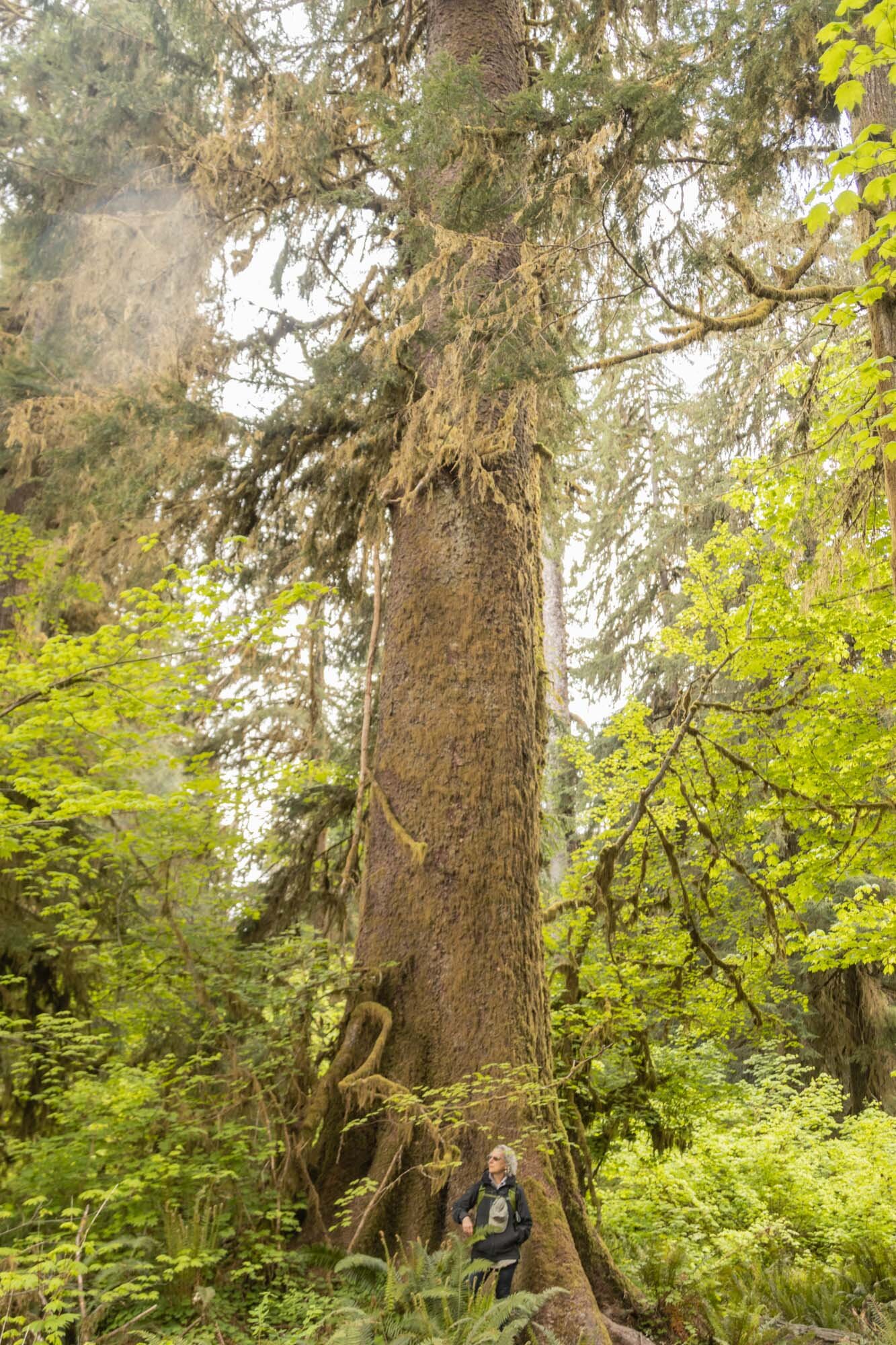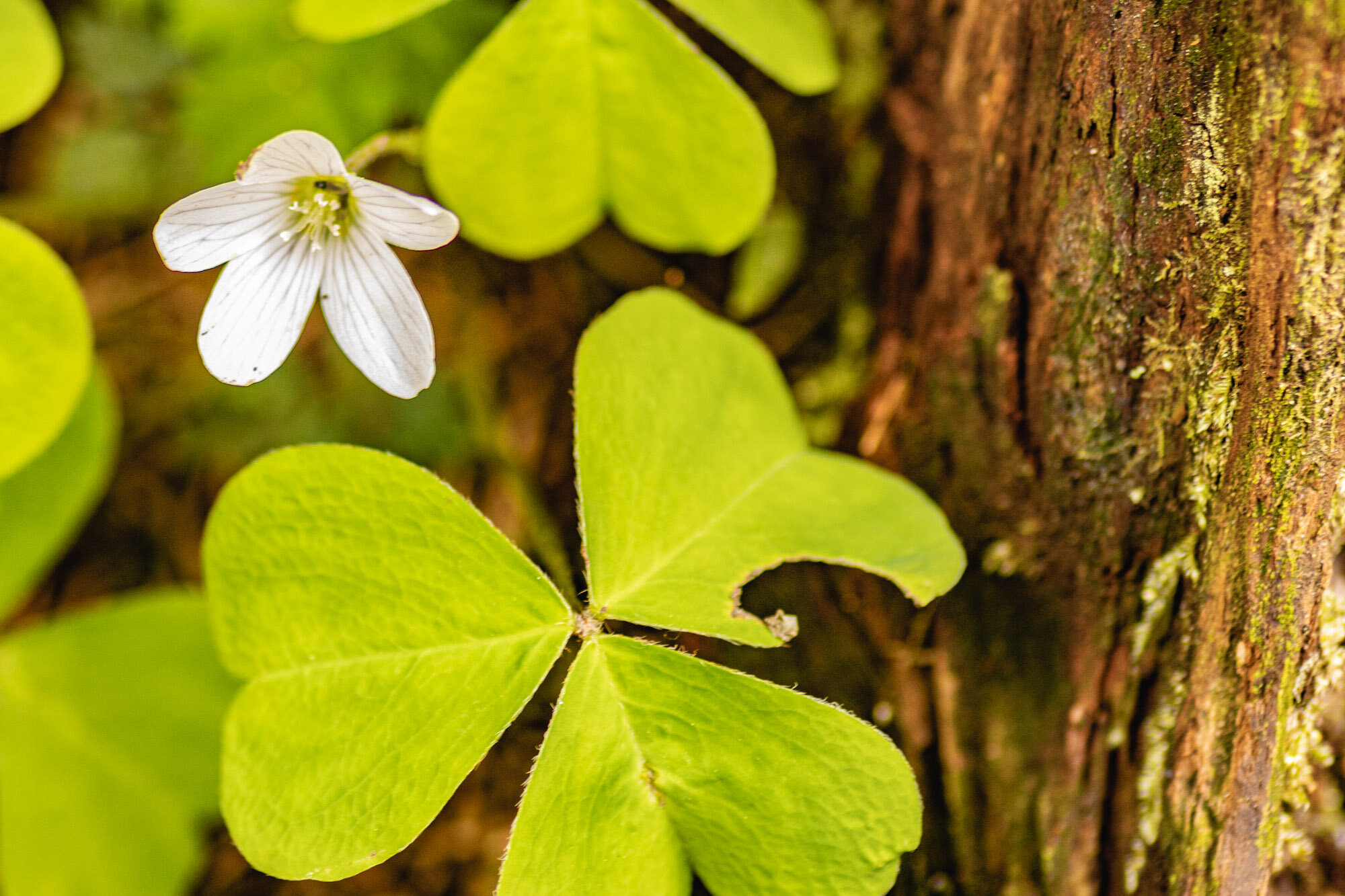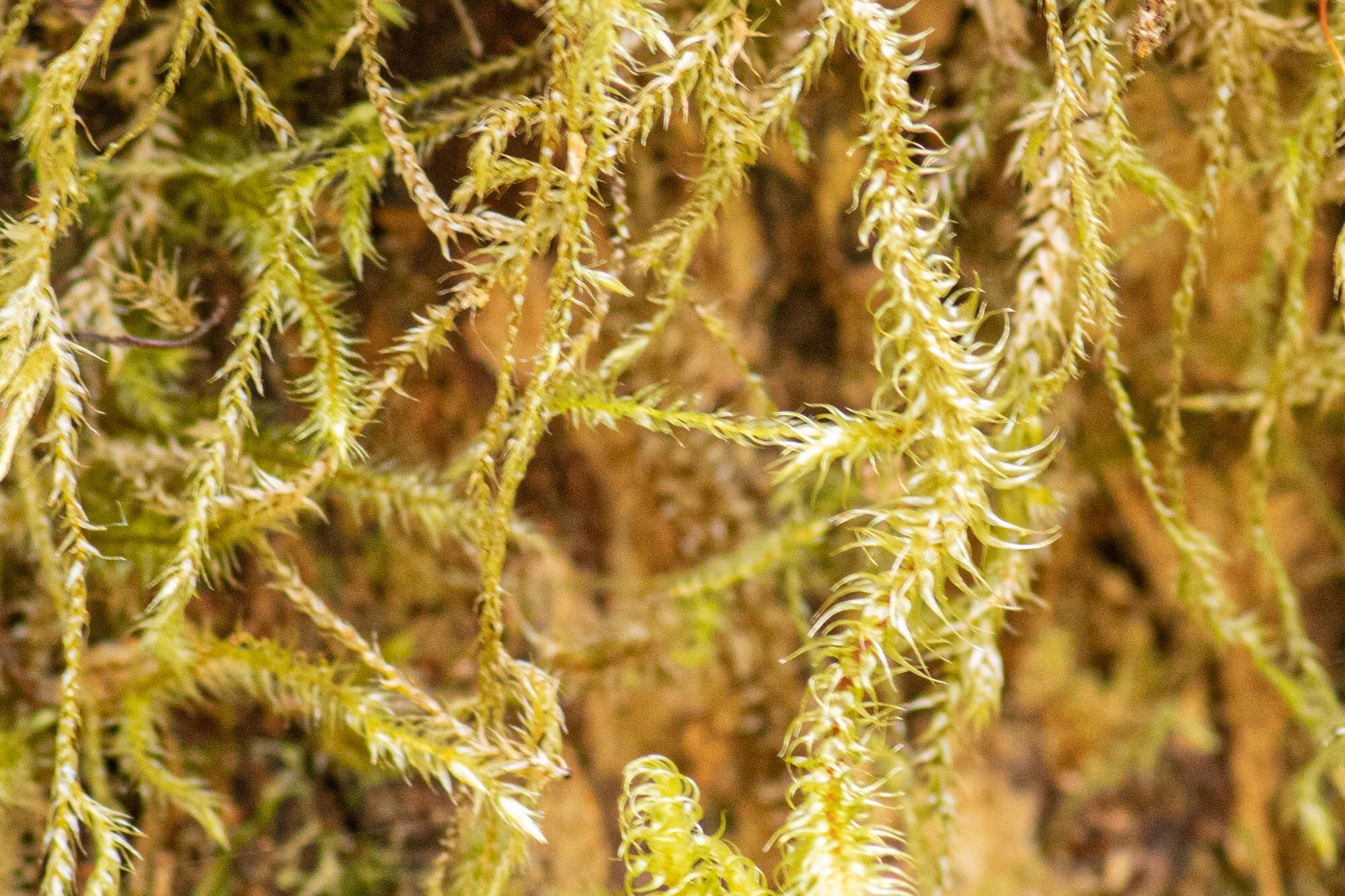Hoh Rain Forest
The Upper Hoh River Road connects Highway 101 and the beaches with the Hoh Rain Forest. It took us to a place that at times felt like both the Emerald City with its lush green colors, and a haunted jungle with moss hanging so voluminously from almost every branch.
There are so many floras growing in the Olympic Peninsula forests, and each has a life cycles of its own. The incredibly tall Sitka Spruce, Red Cedar, Big Leaf Maple, and Douglas Firs, grow to over 200 feet. They provide an umbrella of shade over the thick undergrowth of mosses, ferns, and other plant life that thrive in the shade, cool temperatures, and moisture. (See Sheryl at the base of the tree on the right to get a sense of size.)
Although the forest gets an average of 140 inches of rain a year, the temperature stays under 70 degrees in the summer. The sunshine peaks through bringing light and warmth only when one of the trees decays and falls, accounting for the large numbers of trees we see on the ground. Eventually many of these fallen trees begin families of their own.
According to the oldest conservation organization in the US, founded in 1875, American Forests defines nurse logs as “fallen trees that provide ecological facilitation as they decay”. They further describe that “nurse logs offer seedlings shade, nutrients, water and protection from disease and pathogens, thus nurturing and making way for new generations of trees.” Holes and spaces in the bark of the fallen trees grow and become filled with soil, mosses, mushrooms and small plants. Moss covering the outside of the log causes rapid decay and new plants and trees to grow more quickly.
If you follow the trees with your eyes from the top down, you will find that many of them had originally sprouted from a nurse log. Their roots start above the ground, they thicken and surround part of the nurse tree, and harden before entering the ground. The photo below shows four trees, called a colonnade, that all originated with the same nurse log.
Another thing that became obvious in the Hoh Rain Forest was the blanketing of trees and branches in “epiphytes” which are collection of dozens of types of mosses, lichens, ferns, and fungi. These flora weave themselves together and become the collection apparatus for the trees’ water and nourishment. Not only are the epiphytes functional, but they are also striking in their multiple shapes and shades of green as they create lushness throughout the forests.
If we’re talking about trees in Washington State forests, what about the wood?
Many of the homes and commercial facilities in the neighborhood in Forks where we stayed had at least one logging related item on their property. Whether big machinery, trucks, tools, cut trees or piles of wood, it was clear that logging played a significant role in their lives. But one house we passed regularly really took this to an extreme. There was more chopped wood on the property than one could imagine with logs organized by size and type.
On one of the days a man was outside this house chopping logs and piling the smaller pieces neatly in rows. I was curious so we stopped to speak with him and find out what was behind the volume of cut wood he had collected, and to get his permission to take photos. John was a former logger who retired because “of the problems that logging was doing to his body”. He was only 53 years old but looked well beyond his age. Watching him moving logs of all sizes made it clear that he was still very strong. He explained that this wood was his only source of heat and the previous year he had been unable to collect and cut his wood, so he wants to be sure he has more than enough for next winter. John now works in a place that repairs large machines and spends the rest of his time chopping and piling his wood.
There is a Timber Museum in Forks that displays hundreds of logging associated items that tell a complex story of the history of the logging industry. To read the stories and see the equipment I could not leave without a great deal of respect for the individuals that take great risks to do this dangerous work. Outside of the museum is the Loggers Memorial listing and remembering the men that lost their lives over the last many decades doing their difficult jobs.
The last tree I want to highlight is located at Kalaloch Beach and known as the Kalaloch Tree of Life, and sometimes called the Tree Root Cave. As a result of erosion this Sitka Spruce is literally thriving on its roots that are clinging to a parting bluff on the coast. The area under the roots is referred to as a cave into which a stream flows and then follows out into the ocean. That stream continues to wash away the soil that is underneath its roots, leaving a large area that is large enough for one average size adult can enter. It is a mystery that this tree is still alive.
This beautiful area of our state, whether forest or ocean, trees or water, is full of miraculous beauty and many mysteries of its own.

















